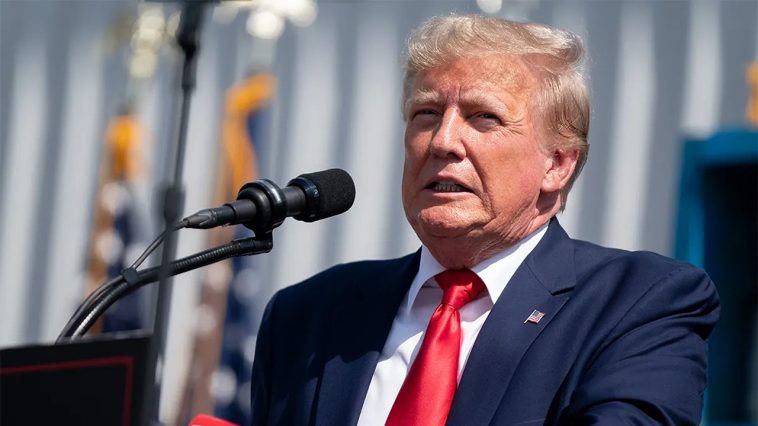LISTEN HERE:
The Hispanic American populace, a pillar of our nation’s diverse fabric, is seeing an increase in its voter base that could potentially shape future political landscapes. According to recent data, this community has experienced a significant growth of almost 5 million voters since the 2018 elections.
Notably, the political inclination within this demographic appears to be tilting towards the right, which could influence electoral prospects, ranging from grassroots candidates to those at the helm of political parties.
Research published by the Pew Research Center, an organization famed for its balanced analysis, confirms the upward trend in the Hispanic voting bloc.
The Center’s study revealed an impressive surge of 4.7 million voters within the Hispanic community over the last five years. The report indicated an intriguing shift in their political persuasion, with an apparent movement towards Republican values and candidates.
Commentary by ADN America has highlighted an interesting development in the state of Texas, where the Hispanic American community is now edging out the non-Hispanic white majority. This dynamic shift places a spotlight on the rate at which Hispanic Americans are achieving voting eligibility, with a staggering 1 million individuals attaining the voting age on an annual basis.
Offering further perspective into the demographic shift, the American Community Survey (ACS) revealed that in 2021, Hispanic Americans accounted for 40.2% of Texas’ population, surpassing the percentage of non-Hispanic White Texans at 39.4%. This growth within the Hispanic community is not only reshaping the state’s demographic composition but also potentially reshaping its political landscape.
Given the Youth demographic, which forms an important part of the Hispanic populace, ADN projects an average of 1 million young Hispanic Americans reaching voting age annually for the next fifteen years. According to a study by Pew Research in October 2022, this demographic is expected to generate a significant number of eligible voters, signaling its importance to both major political parties.
Former President Donald Trump seems to be capitalizing on these changing demographic and political currents. National polls indicate an expanding lead for Trump over President Joe Biden, with decisive margins in key battleground states proving pivotal.
Emerson College Polling, one of the leading firms in political surveying, showed Trump leading Biden by 12 percentage points in the politically significant state of Ohio. The poll was conducted among 438 registered voters and contained a margin of error of +/- 4.5 points, affirming the significance of this lead.
Simultaneously, incumbent Senator Sherrod Brown (D-Ohio) appears to be contending with a challenging electoral atmosphere. Emerson’s survey found that Senator Brown was trailing behind two hypothetical Republican contenders, while narrowly leading a third.
President Biden’s standing among Ohio voters seems bleak according to the poll’s findings, with his approval rating resting at a disappointing -33 percent. In stark contrast, Republican Governor Mike DeWine enjoys a positive approval rating of +6 percent, suggesting a prevailing preference for Republican governance within the state.
Examining the polling data more closely, Emerson College’s Professor Spencer Kimball noted that Trump’s lead over Biden in Ohio was larger than his victory margins in both 2020 and 2016. Kimball emphasized the lower enthusiasm levels among younger and minority voters for Democratic candidates, both within the state and across the nation.
When voters were asked if a future event could potentially change their current political choice, responses were generally steadfast. Approximately 55 percent of Trump’s supporters stated they would not consider voting for Biden, while 49 percent of Biden’s supporters maintained their unwavering loyalty regardless of potential future events or outcomes.
The survey also brought attention to the upcoming 2024 Ohio U.S. Senate election, with Professor Kimball commenting on the current sentiment towards Senator Brown. Kimball noted a measureable lack of enthusiasm for Brown among traditional Democratic demographics, specifically voters under the age of 30 and Black voters.
Kimball emphasized that these voters were not necessarily showing a preference for a Republican contender over Senator Brown. Rather, these voters were currently exploring other options or remaining undecided, adding to the uncertainty surrounding the electoral prospect.
Key findings from the survey showed that within the under-30 voter group, about one third were considering voting for a different candidate or remained undecided in a hypothetical contest between Brown and Dolan. A similar sentiment was evidenced among Black voters, with 38% indicating potential support for another candidate or maintaining their undecided status.
Yet, the situation is not entirely grim for Senator Brown. Despite the challenging electoral landscape, Kimball pointed out a silver lining for Brown. According to the poll, Brown is leading among independent voters against potential Republican candidates, giving a glimmer of hope for his candidacy.


